Manhunter: New York (Evryware) - 1988
This review is part of the “Let’s Adventure!” series. See all reviewed games sorted by rating here.
Manhunter: New York is a post-apocalyptic adventure game designed by Barry Murry, Dave Murry and Dee Dee Murry of Evryware and published in 1988 by Sierra On-Line. Built using Sierra’s AGI (Adventure Game Interpreter) engine, it stands out as it doesn’t involve side-scrolling views or a text-parser to interact with the world.
You play the role of a manhunter, tasked by the ORB Alliance to hunt down other humans the Orbs have deemed threats. There’s no real backstory presented via an intro sequence or tutorial mission - you have to read the manual to learn all this.
The game is split up into four days. Each day begins with an Orb (floating eyeball things) coming into your apartment to give you the day’s assignment. You then fire up your MAD (Manhunter Assignment Device) which tracks the day’s “targets” to show you where they’ve visited and what other people they’ve encountered.
Using the MAD locations within New York City will be made available on an overworld map for you to visit. The only way to open these locations for exploration is for them to either be uncovered by tracking targets using the MAD, or looking up people’s names via the MAD to get their address.
As you’re a manhunter, and the job the Orb’s have given you is to identify individuals, you’ll need to pay attention any time a name is dropped. This can come in the form of toe tags on a corpse, posters on a bulletin board, notes or scraps of paper, signs, pictures, etc.
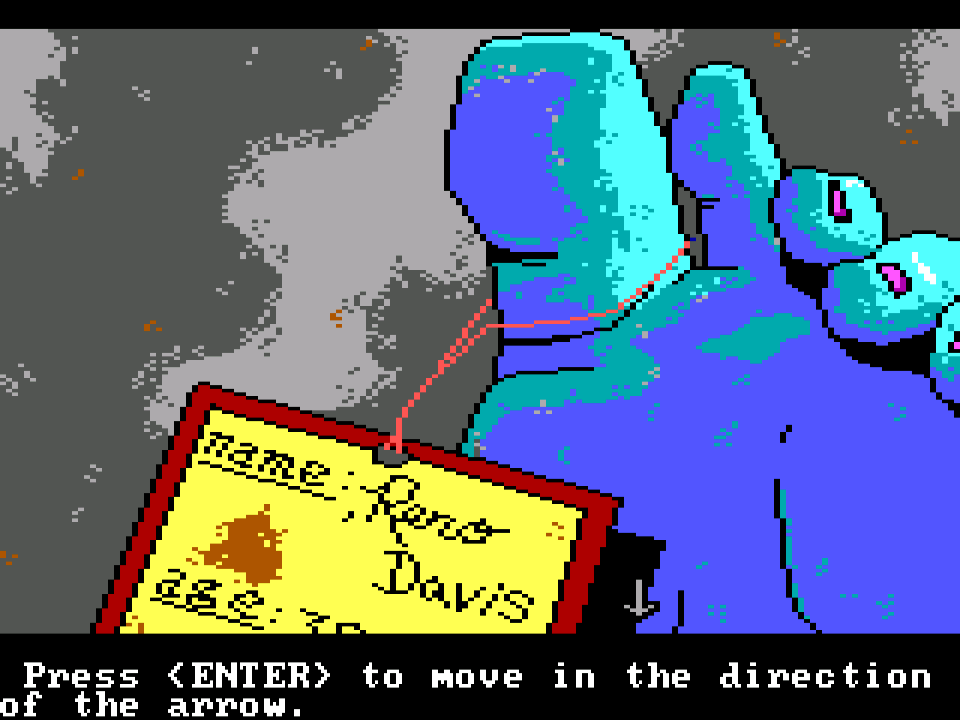 I wonder if I can find more info about “Reno Davis” by just entering that into the MAD …
I wonder if I can find more info about “Reno Davis” by just entering that into the MAD …
Each location you uncover and visit will have limited hotspots to interact with, but moving the cursor around the screen will uncover these pretty quickly. The background artwork and character portraits are extremely well done and highly detailed.
As one of the last AGI games made the team knew how to push the engine to the limits and make the best possible game as a result (only King’s Quest 4 and Manhunter 2 came out afterwards as AGI games).
This game relies VERY heavily on arcade sequences to add additional interactive elements. These sequences tend to all play out in a very similar fashion as you’re either trying to navigate a maze, or waiting for (something) to move from left to right/top to bottom for you to click ENTER to throw.
I didn’t love the arcade sequences and found them to be a bit too drawn out, and making a mistake would likely kill you and cause you to have to start over again from the beginning. The sequence where you have to get past 4 thugs by jumping or ducking was just tedious. You only progress when you jump or punch, and it takes forever to get to the person throwing stuff at you. If they happen to hit you you start over again and start the process of inching back towards them.
Luckily, you can save everywhere in this game, so when you make a bit of progress you can save so you can restore from that point when you inevitably die moments later.
There are SO many ways to die throughout this game, and each death typically results in the game designers giving you some cheeky feedback about how you screwed up and what you might want to do next time. This is such a Sierra On-Line trope at this point you’d almost be surprised NOT to see it in one of their games, but I still enjoyed reading the various messages.
You also are sent back to right before you died whenever you do, so if you forgot to save there’s a lot less backtracking you’ll need to do to try again. This feature is extremely helpful as you’ll die A LOT.
The difficulty of this game is pretty high, and requires a lot of trial and error to solve most puzzles. For example, below the pawn shop when you need to solve the 4 number-based puzzles you’ll likely have to resort to a walkthrough to get the last 3. I tried to do this on my own but just couldn’t figure it out :(
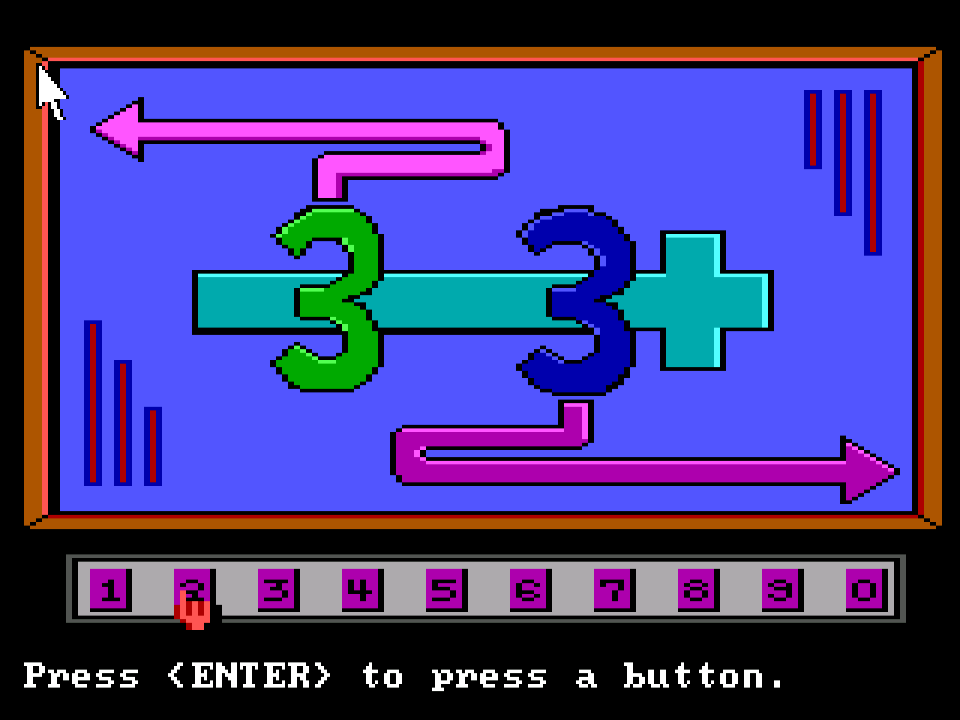 The answer is 264, because one less than 3, 3 plus 3 and one greater than 3. Obvious, right?
The answer is 264, because one less than 3, 3 plus 3 and one greater than 3. Obvious, right?
There’s almost never any form of background music throughout the game, but the “bleeps and bloops” you get as you navigate the various screens do add a bit to the experience. Honestly the sound quality really pales in comparison to the visuals - which I found surprising.
I really love the tracking mechanic using the MAD. It’s really cool to be able to tag other moving characters to see where they go throughout the day and unlock additional places in New York City to investigate. There’s only a handful of items you pick up, so you never really feel you’re on a fetch-quest at any point.
Manhunter is a lot more gory than typical Sierra titles. It’s great that Sierra didn’t feel the need to censor these games it was only acting as the publisher for and allowing them to express themselves with more mature content. I always enjoyed these titles more as a result of them not feeling “watered down”, as you’re playing in a dystopian future where death lies around every corner.
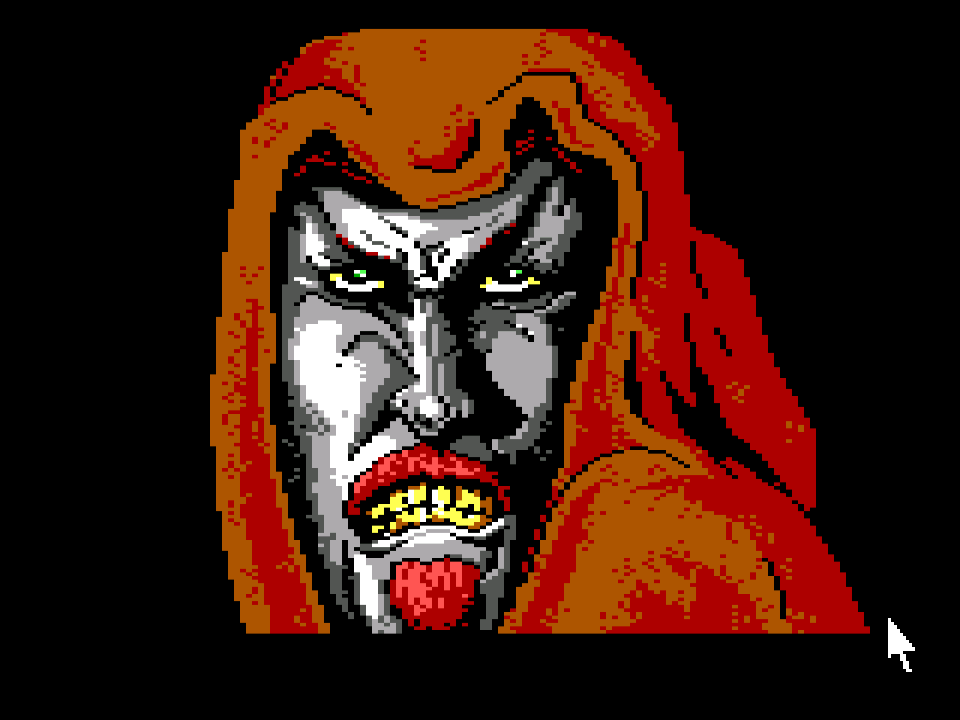 The main villain’s name is Phil … just Phil
The main villain’s name is Phil … just Phil
You have to piece the story together from the info you get in the manual then bits and pieces throughout the game. The endgame sequence is extremely complex and really assumes you’ve been paying very close attention to every possible piece of information so you’ll know what to drop bombs on, where they are and why you’re doing it.
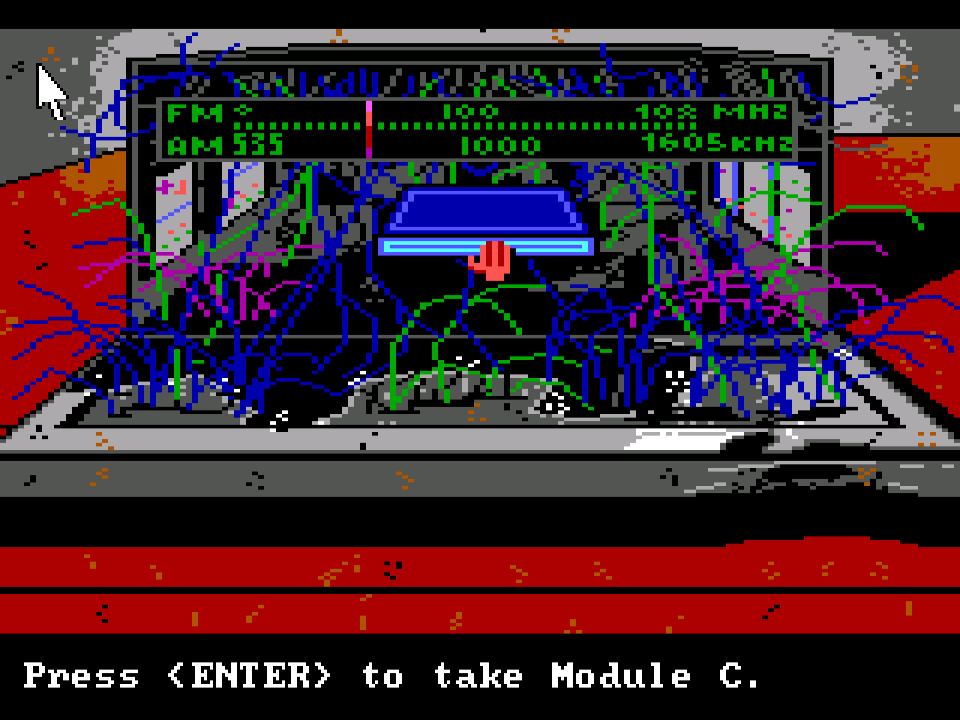 Use the crowbar on the stereo because that’s clearly what you’d be thinking of doing in this situation
Use the crowbar on the stereo because that’s clearly what you’d be thinking of doing in this situation
I loved this game when I first played it as a kid. I really enjoyed the subject matter and the whole MAD tracking mechanic just felt natural within this world. I’ve never really played another game the recreated this system of working backwards from a recording that you could engage with to discover how subjects moved around the game world.
Though the game is pretty hard to beat without a walkthrough, I’d honestly recommend giving it a go if you’re a fan of adventure games. Just remember to be patient in the sewers as that maze is a pain in the ass. Interestingly enough though, the Apple II version of Manhunter allows the option of skipping the sewer maze because memory limitations prevented saving the player’s progress in that section.
Maybe that’s the version I should have played …
Game Information
| Game | Manhunter: New York |
| Developer | Evryware |
| Publisher | Sierra On-Line |
| Release Date | 1988 |
| Systems | DOS, Amiga, Atari ST, Apple IIGS, Tandy 1000 |
| Game Engine | AGI |
My Playthrough
| How Long To Beat? | 4.5 hours |
| Version Played | DOS via ScummVM |
| Notes | Manual, Walkthrough |
Score
See here for a refresher on how we’re scoring these games.
| Atmosphere (20) | 17 |
| Story (25) | 14 |
| Experience (15) | 11 |
| Impact (10) | 6 |
| 69% |
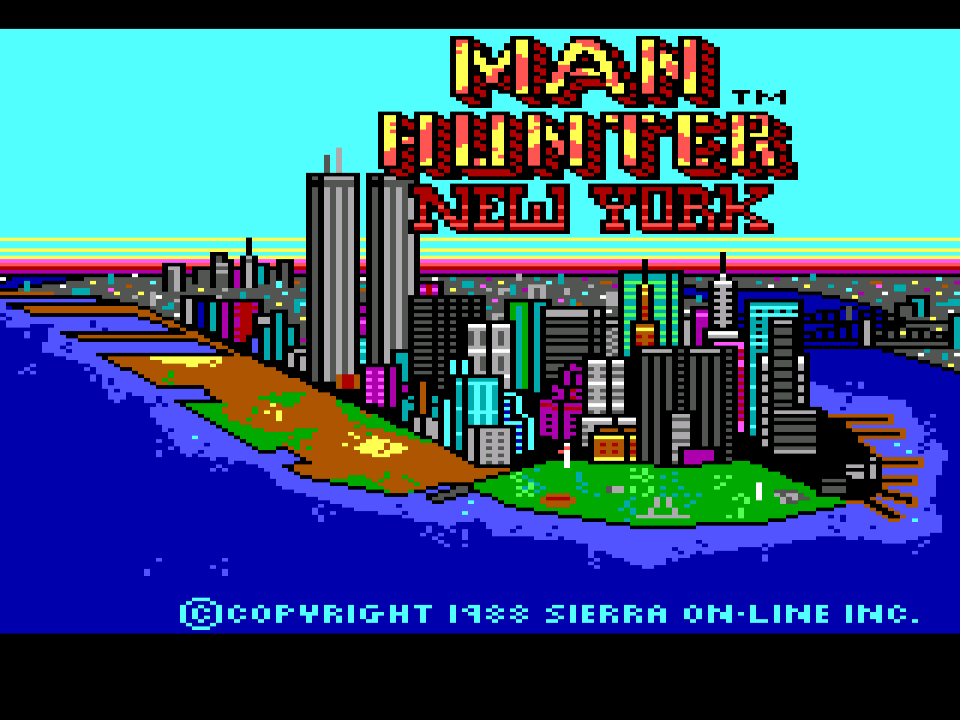
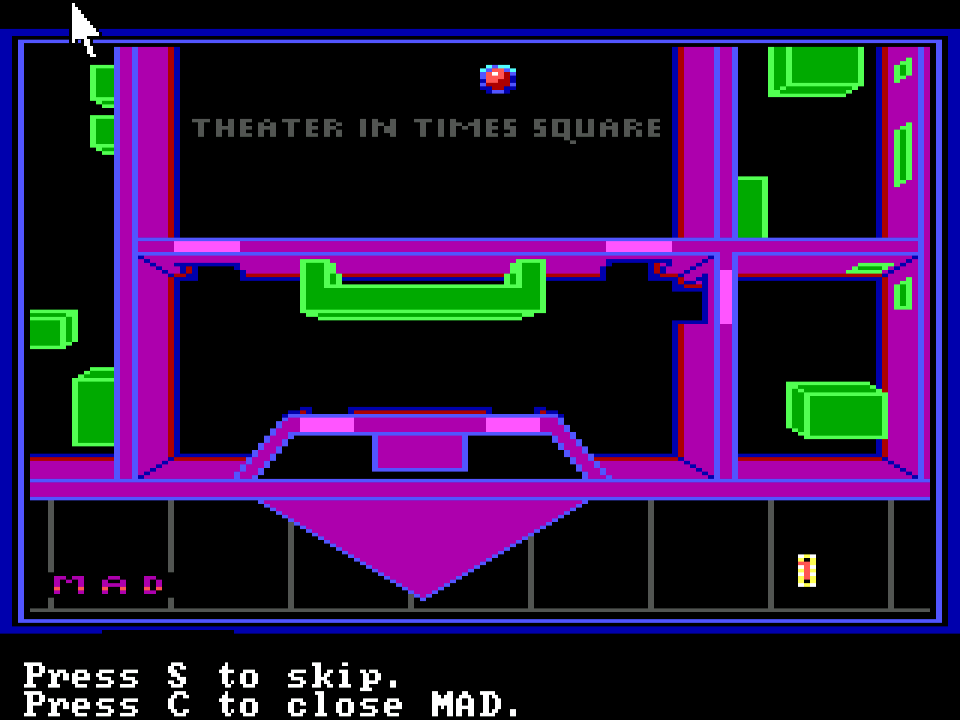
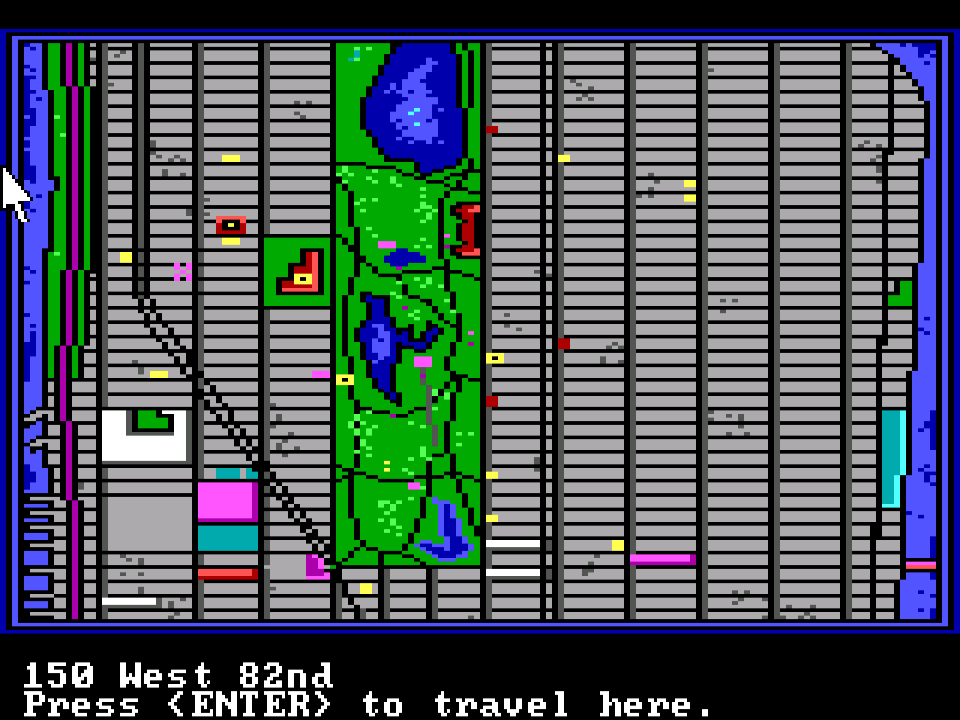
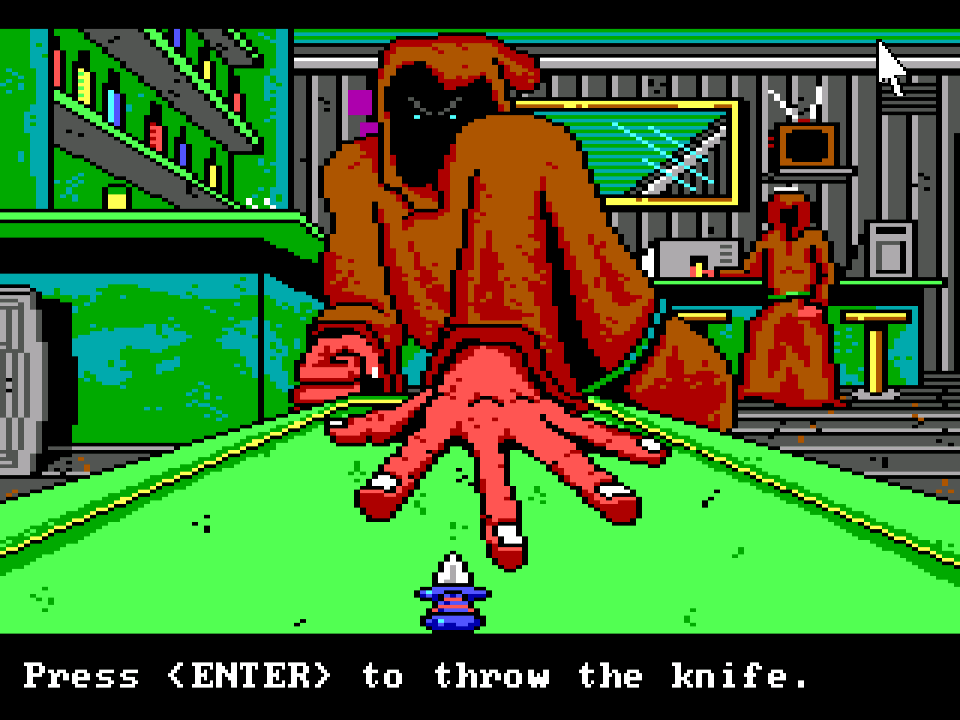
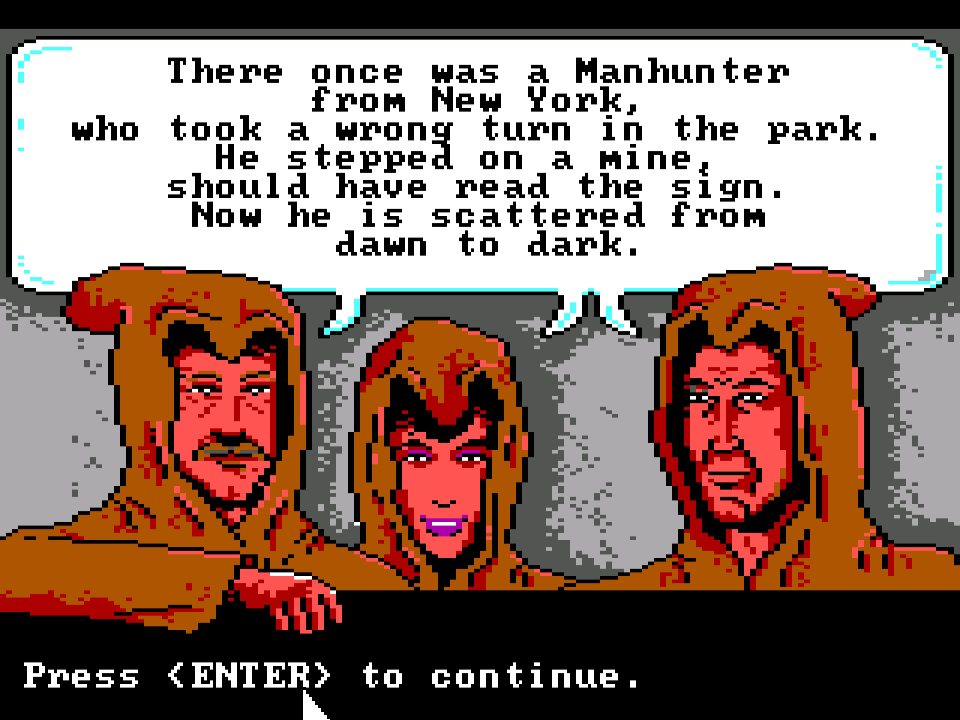
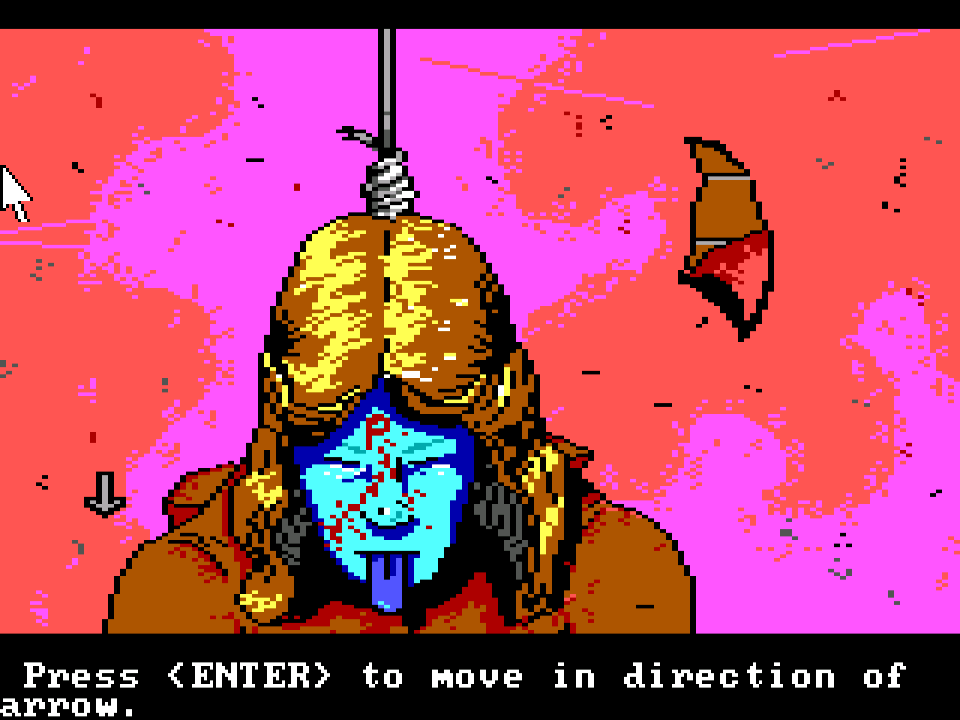
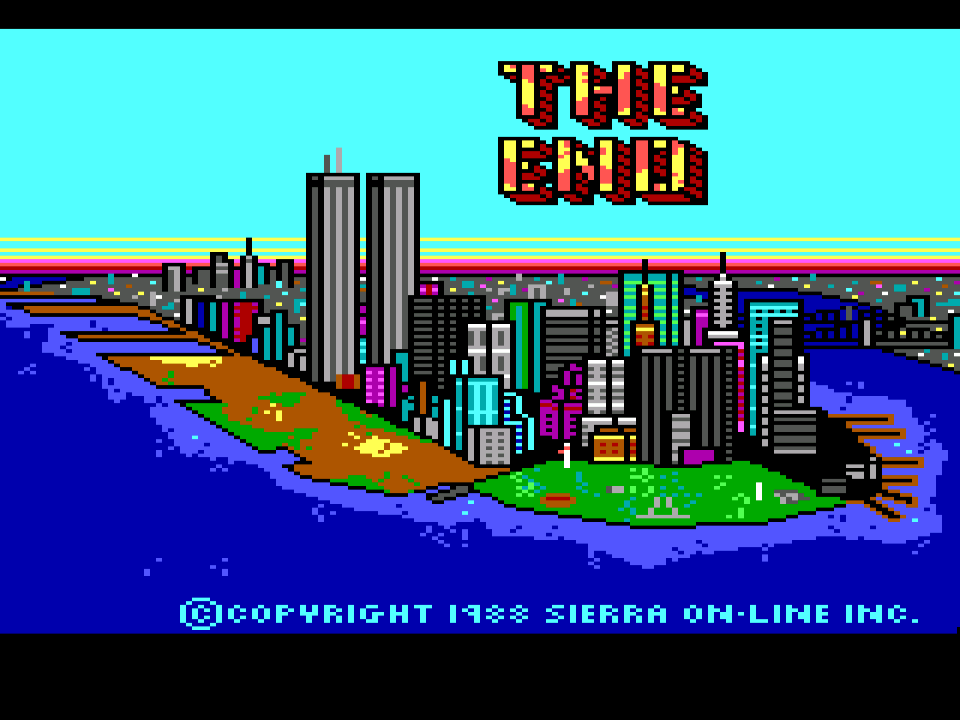
Comments powered by Disqus.